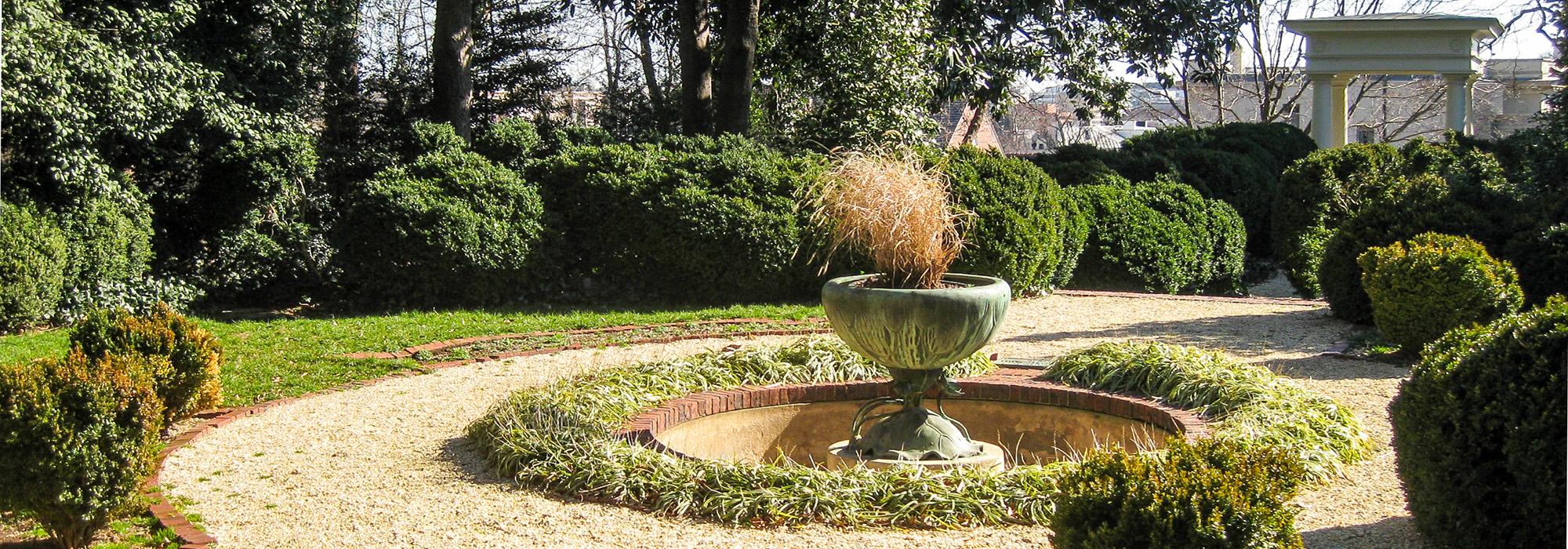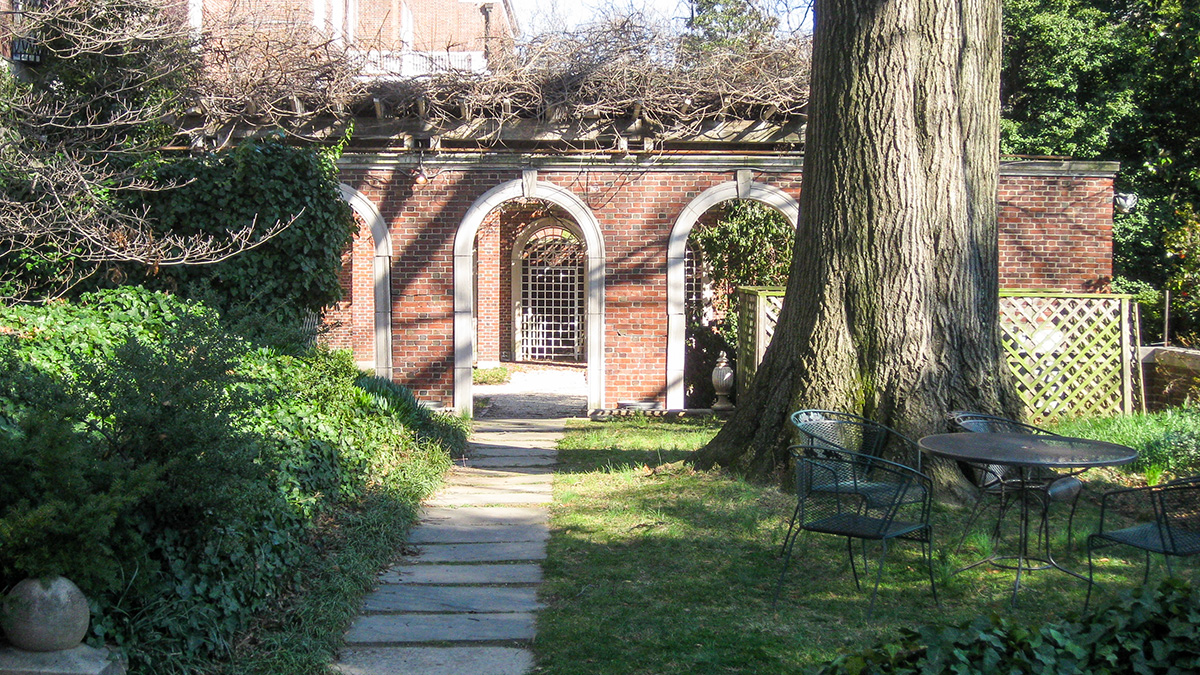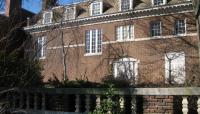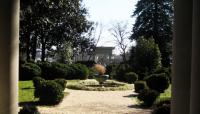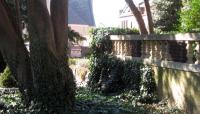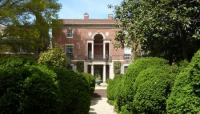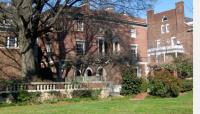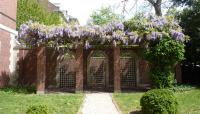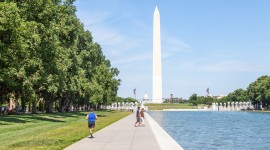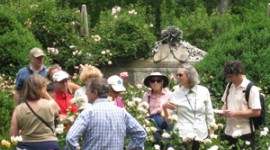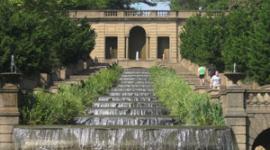Landscape Information
This ¾-acre estate was assembled from several properties by avid textile collector George Hewitt Myers. In 1913, he commissioned John Russell Pope to design a Georgian Revival mansion on one parcel, and two years later purchased the adjacent property, including a house designed in 1908 by Waddy Wood, in order to expand his textile collection, which opened as a museum in 1925.
The rear garden comprises two lots originally purchased by Myers in 1913. Aligned with the Pope house, a classical garden designed by landscape contracting firm J.H. Small & Sons features a straight pebbled walk extending southward. It is intersected by a perpendicular path flanked by symmetrical brick arcades capped with wisteria-covered pergolas. A round terrace serves as a focal point along the path, surrounded by English boxwood with a sunken basin and fountain in the center. The walk extends down a short flight of steps to a neoclassical garden pavilion and boxwood-lined path which were implemented in 1976. The less formal garden behind the Wood house consists of a central lawn enclosed by a low brick wall and punctuated by apple and cherry trees and an old oak tree. Large magnolias shade the eastern periphery, while the western property boundary is screened with white pine trees.
In 1948 landscape architect Rose Greely created an Arts and Crafts-inspired plan featuring a greensward bordered by a perimeter path and colorful plantings; it was never implemented. The Textile Museum properties were listed in the National Register of Historic Places in 1973. In 2015 the estate was sold by George Washington University and is now under private ownership.



